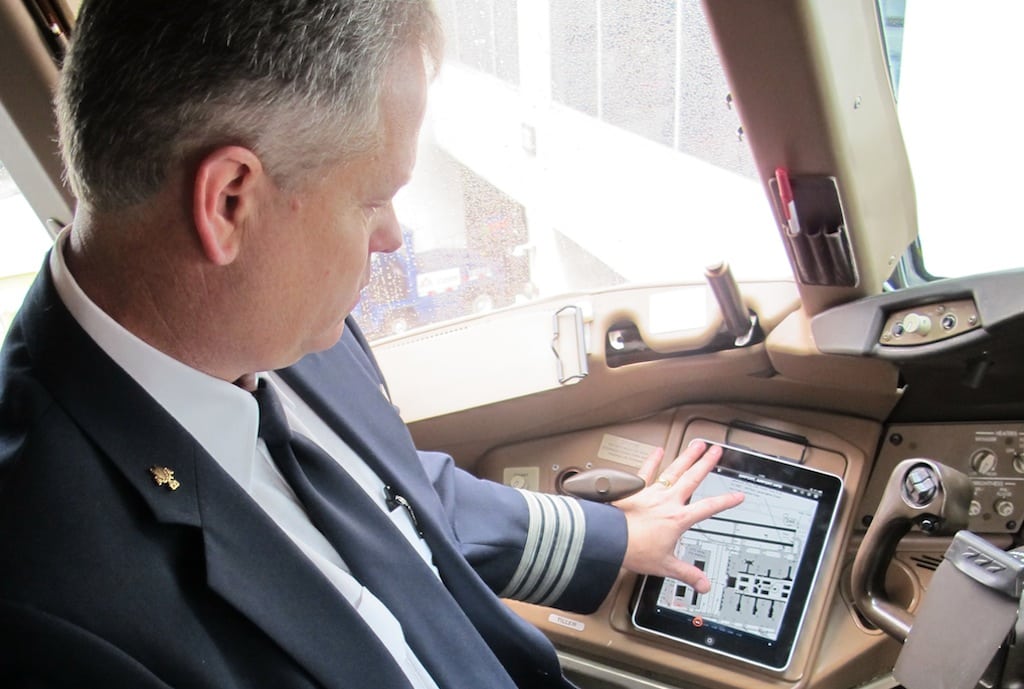Skift Take
Creating a pilot records database out of airline employment records that currently exist on everything from Excel spreadsheets to tattered paper files and PDFs could be more difficult to get together than a certain federal government healthcare insurance website.
Lorin Maurer sat in seat 3A on Colgan Air Flight 3407 on February 12, 2009, and was en route to Buffalo, New York, after taking off from Newark Airport to celebrate the wedding of her boyfriend’s brother on Valentines Day, two days later.
Maurer, who had just turned 30 and worked in Princeton University’s athletic department getting grants for athletes, never made it to the wedding, recalls her father, Scott Maurer.
“Lorin’s goal was to some day be a Division 1 athletic director and sadly that never occurred,” Scott Maurer says.
Lorin Maurer died in the Flight 3407 crash, as did all the other 44 other passengers, two pilots, two flight attendants, and one person on the ground.
Among the issues that the National Transportation Safety Board raised in its investigation of the crash were the adequacy of pilot training at Colgan Air, and a lack of full disclosure pertaining to Captain Marvin Renslow’s pilot training records.
In accordance with the Airline Safety and FAA Extension Act of 2010, the FAA several months ago implemented more rigorous training requirements for pilots, but the law also called for the establishment of an electronic pilot records database.
However, implementation of this centralized database for pilot records, to be used by airlines in the hiring process, looks like it is years away.
The Lesson From Colgan Air
The NTSB investigation of the Colgan Air flight, which was marketed as Continental Connection flight 3407, found that captain Renslow acknowledged to the Colgan Air during the hiring process that he had failed one proficiency test, or “check ride,” as it is called, and eventually passed it, but he did not reveal two other certificate disapprovals.
As part of the NTSB investigation, a Colgan Air official testified that the pilot would have been fired had the airline known about his lack of candor on the certificate failures.
The 2010 law requires the FAA to establish a pilot records database containing information about failed certificate tests; training records from airlines and the military, and even driving records.
U.S. Representatives Frank LoBiondo and Rick Larsen, the chair and ranking member, respectively, of the House Aviation Subcommittee, wrote to the DOT’s Office of Inspector General in September expressing concerns about the lack of progress in establishing the pilot records database as a means of ensuring that airlines can properly vet prospective pilot hires.
“The flying public deserves better,” says Scott Maurer, who actively works with the Families of Continental Flight 3407. “No one should find out like we did that a captain failed two FAA certifications that were not disclosed on his hiring application to Colgan.”
“We must learn from errors and prevent them from happening again,” Maurer says. “Colgan testified they would not have hired Captain Renslow if they had known.”
Distance Between Law and Records
The law also contains a provision that essentially requires prospective pilots to waive their privacy rights and release their records from former employers, and these records are to be part of the database.
Airlines for America, the airline trade group, and pilots unions have signed off on and support building the pilot records database, but this doesn’t mean the measure is necessarily popular with the rank and file.
“The pilot database is not something any of the groups welcome with open arms,” Scott Maurer says. “Pilots are concerned about privacy. And the industry is concerned about costs and effects to regionals for codeshare expenses.”
One of the problems in establishing the database is that pilot records may go back several decades, and there were never any standards as to how to keep the records so rating systems and formats are a real hodge podge, varying widely from airline to airline.
A4A contends that the lack of a pilot records database does not harm airline safety, although obviously legislators thought differently about the need to establish one.
“The database implementation delay has no impact on safety because hiring airlines have already thoroughly reviewed the training and other flight records of applicant pilots,” A4A states. “The only difference is that the hiring carrier receives the records directly from the pilot’s prior airlines rather than through the proposed pilot record database.”
The issue takes on some urgency as members airlines of A4A are on track to hire 800 to 1,000 pilots in 2013, and about the same number next year.
But, in the short term, at least, they will be doing so without the benefit of tapping into an FAA pilot records database.
“We could be a full 10 years in arrears from the crash of Flight 3407 until the full implementation of the FAA rules to make improvements,” Scott Maurer says. “The flying public deserves better.”
The Daily Newsletter
Our daily coverage of the global travel industry. Written by editors and analysts from across Skift’s brands.
Have a confidential tip for Skift? Get in touch
Tags: faa, labor, pilots, safety
Photo credit: The FAA is working on building an electronic pilot records database to be used by airlines in the hiring process. Pictured is an American Airlines pilot using an iPad in the cockpit. American Airlines
